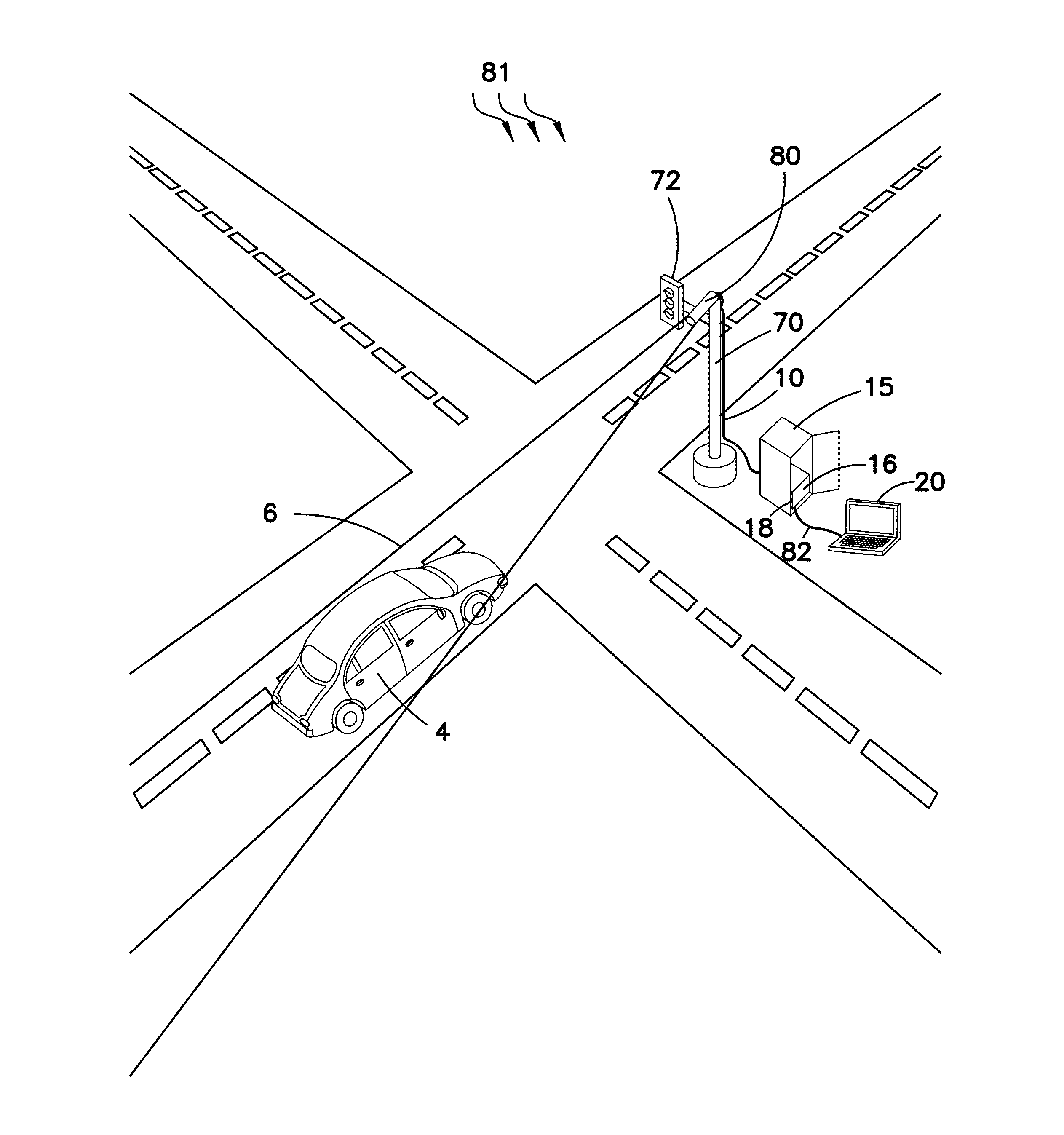System and method for configuring a traffic control sensor system
a technology of traffic control and sensor system, applied in the field of system and method for configuring a traffic control sensor system, can solve the problems of failure to maintain the tracking of a vehicle during its travel through the entire user defined zone, forced stop of vehicles, and periodic stranding of vehicles at intersections
- Summary
- Abstract
- Description
- Claims
- Application Information
AI Technical Summary
Benefits of technology
Problems solved by technology
Method used
Image
Examples
Embodiment Construction
[0047]The present invention is a system and method for a traffic control sensor system that becomes integral with a separate traffic control system operating in open mode. The present traffic control sensor system is further defined as one or more standalone microwave radar transceivers (“sensors”) and a cooperative electronic data bus card (“Traffic Control Interface Card” or “TCIB”). The sensor is in electrical communication with the TCIB via an Ethernet cable, and electrical connectors of the TCIB are in electrical connection with the traffic control system via its electrical communicative slot resident upon the motherboard of the traffic control system.
[0048]The traffic control sensor system of the present invention utilizes one or more microwave sensors (sensors) to detect non-stationary vehicles moving across the monitored piece of roadway or surface which carries vehicles. For purposes of the present invention, a pedestrian on foot, skateboard, bicyclist, or other mobile vess...
PUM
 Login to View More
Login to View More Abstract
Description
Claims
Application Information
 Login to View More
Login to View More - R&D
- Intellectual Property
- Life Sciences
- Materials
- Tech Scout
- Unparalleled Data Quality
- Higher Quality Content
- 60% Fewer Hallucinations
Browse by: Latest US Patents, China's latest patents, Technical Efficacy Thesaurus, Application Domain, Technology Topic, Popular Technical Reports.
© 2025 PatSnap. All rights reserved.Legal|Privacy policy|Modern Slavery Act Transparency Statement|Sitemap|About US| Contact US: help@patsnap.com



